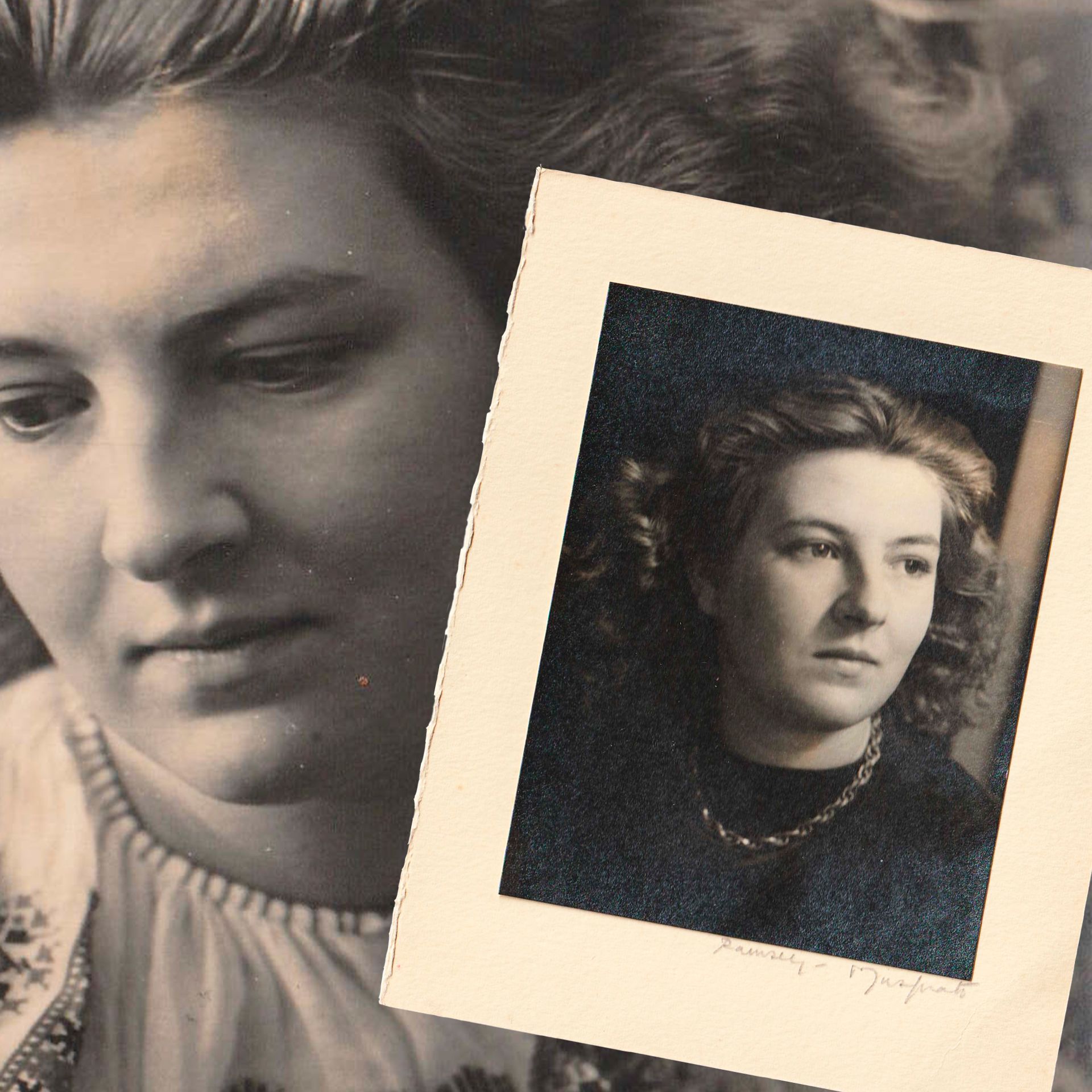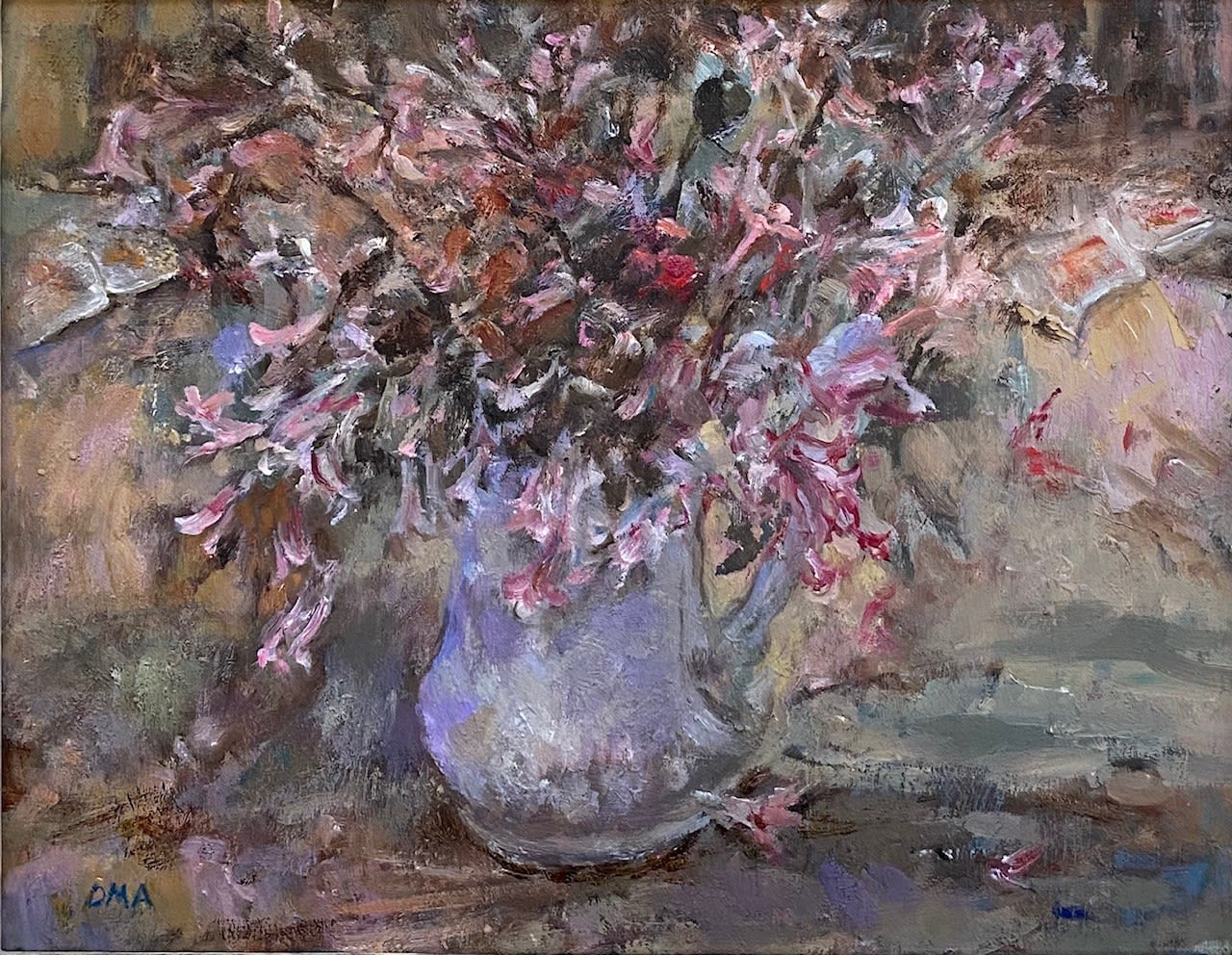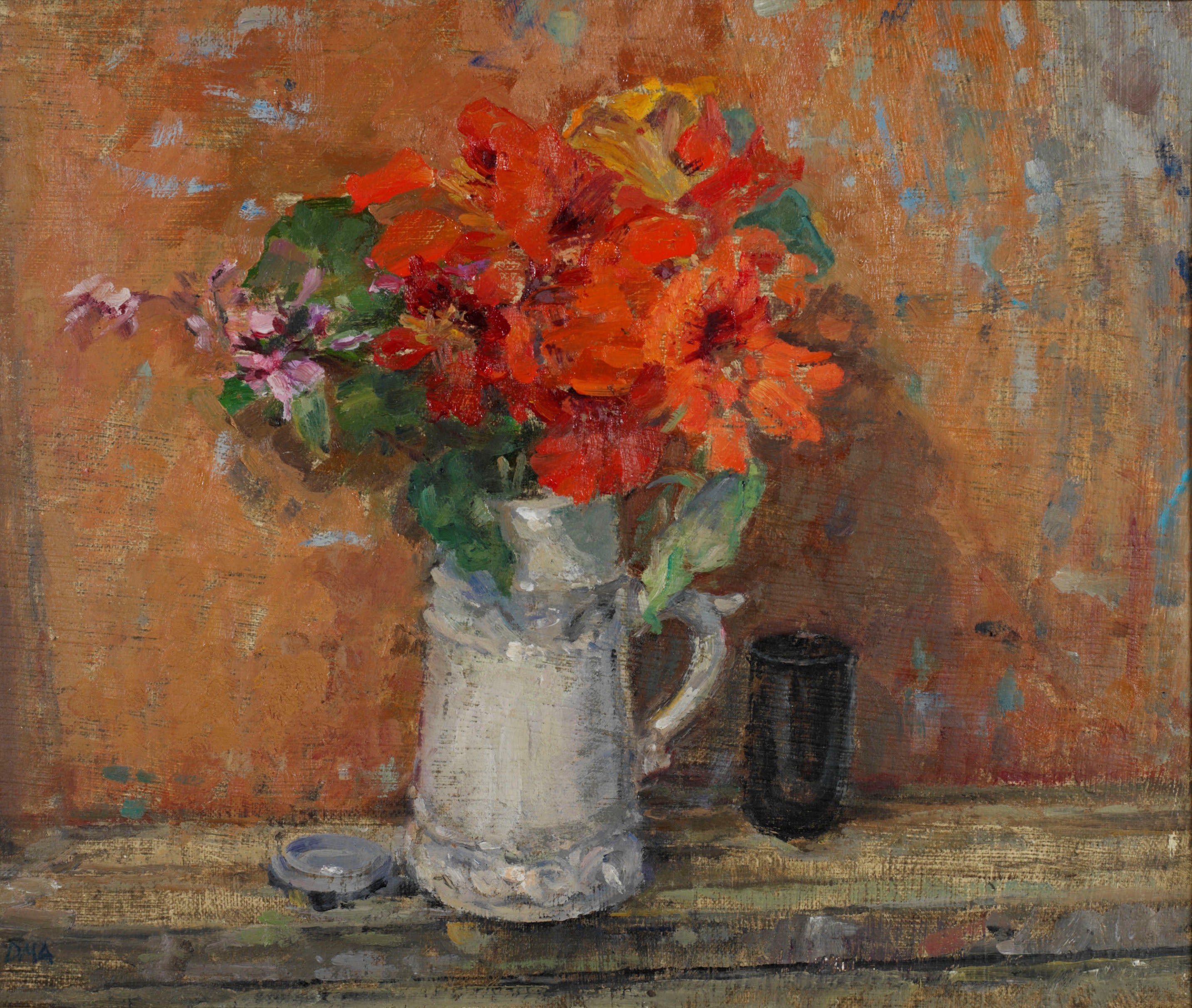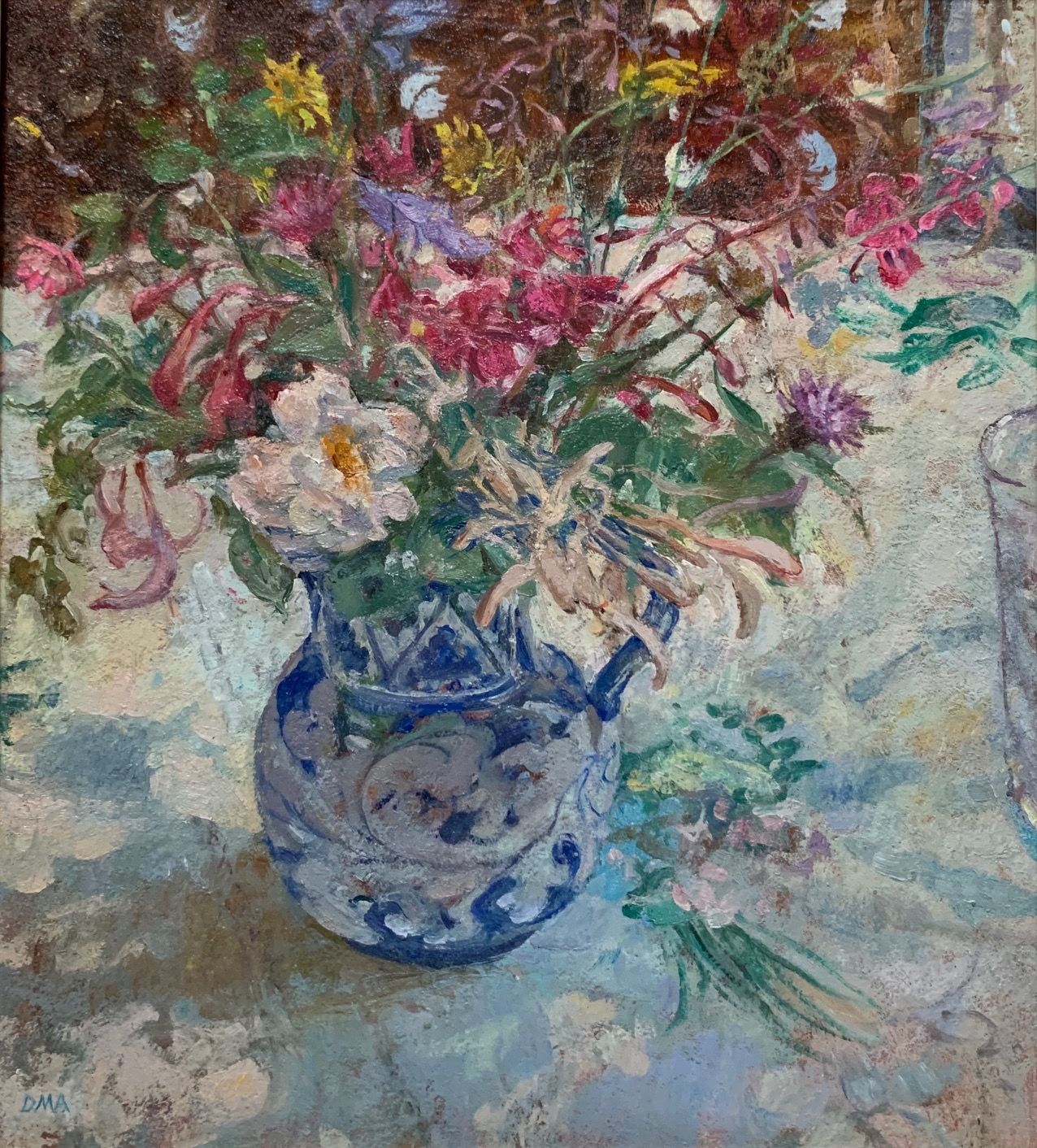Memories: Diana Armfield
A brush with the past
The 102-year-old artist Diana Armfield recalls her student days at the Slade School of Fine Art during the 1940s
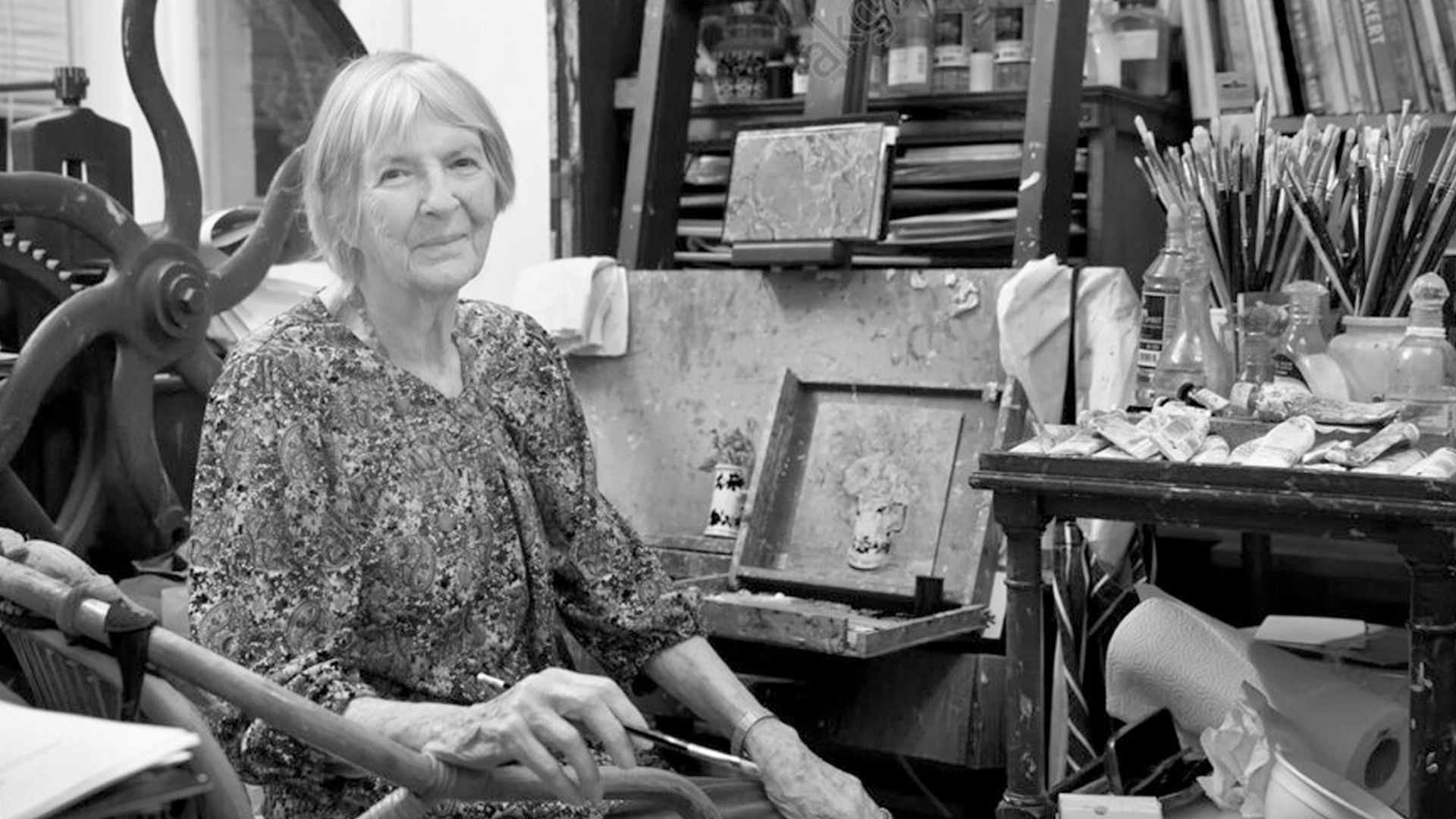
Memories: Diana Armfield
A brush with the past
The 102-year-old artist Diana Armfield recalls her student days at the Slade School of Fine Art during the 1940s
People | Portico Magazine | Spring 2023

I was born in 1920 in Hampshire, a pleasant part of the country where the houses were behind high hedges. My father’s family were Quakers. He was the manager of an engineering works, while my mother was literary and full of ideas.
As a child, I was very happy to play by myself, scribbling down stories that leaned rather heavily on Beatrix Potter. I adored animals, and from an early age, I was always drawing and making things. I remember taking lumps of clay from the riverbank nearby, fashioning them into objects and baking them in our range cooker.
After school, I spent a year at the School of Art in Bournemouth and did a short stint at the Central School of Art and Crafts in London before getting an interview to study at the Slade in Oxford. The school had been evacuated at the outbreak of the Second World War.
“One of the teachers was a significant influence on me – he also painted flowers, which are the subject of many of my own works”
My mother accompanied me on the trip but was surprised to be invited into the interview itself. When the professor announced that I had been accepted, he addressed his remarks to my mother, who was sitting in the corner of the room.
A key experience for me while studying at the Slade was the life classes. One of the teachers, Allan Gwynne-Jones, ran the library, and he was especially helpful in supporting me to find relevant materials. He was a significant influence on me – he also painted flowers, which are the subject of many of my own works.
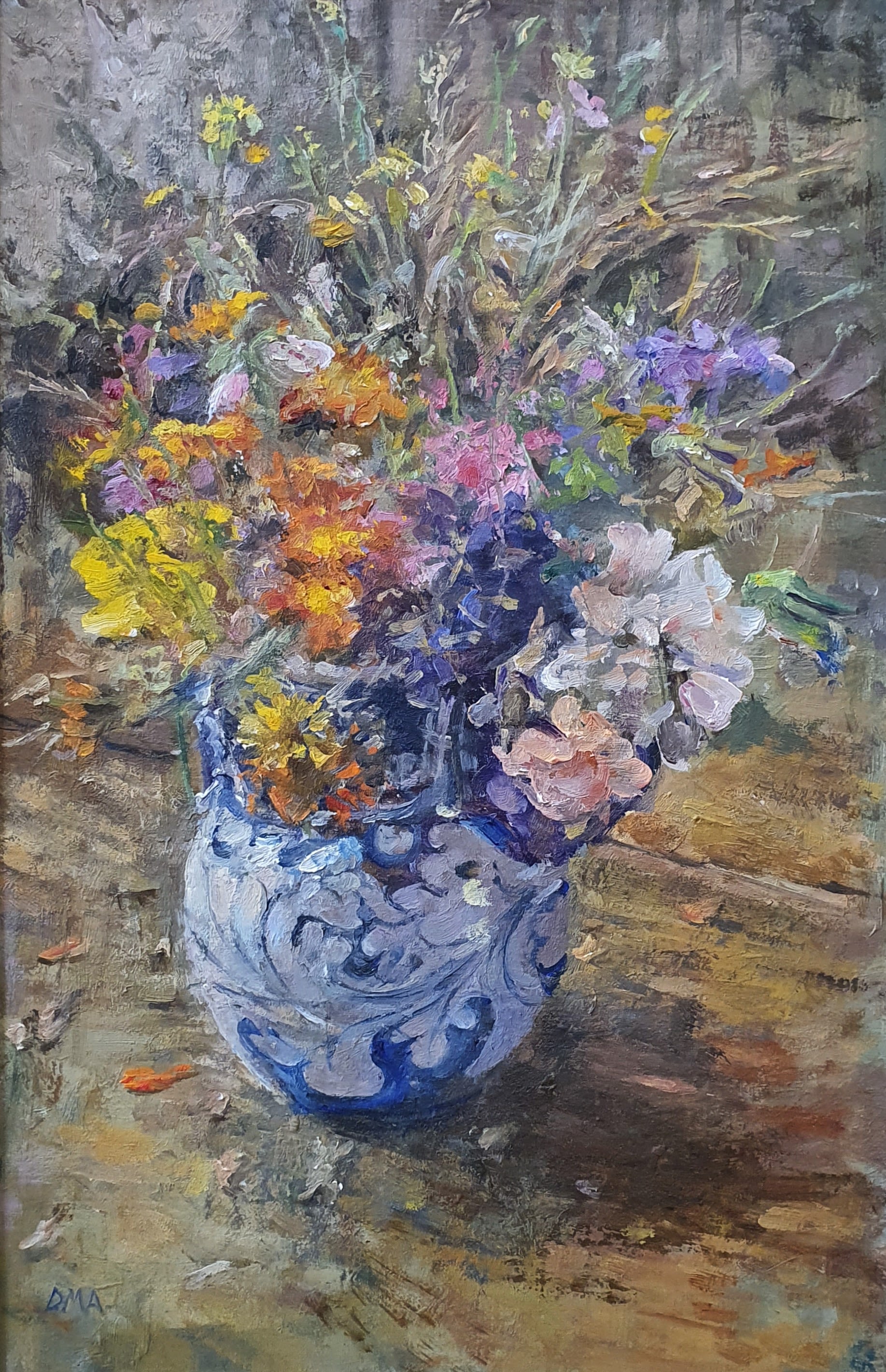
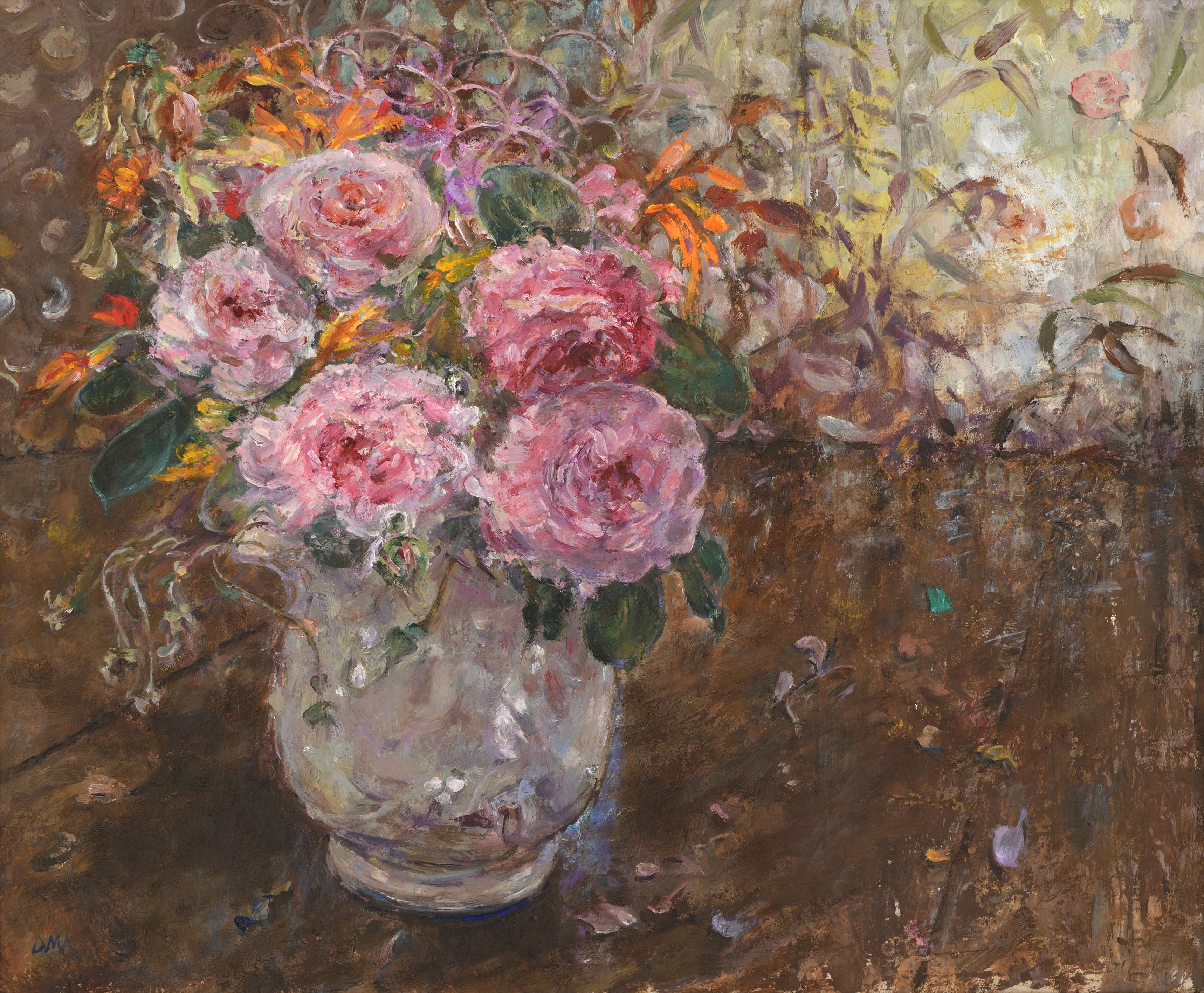
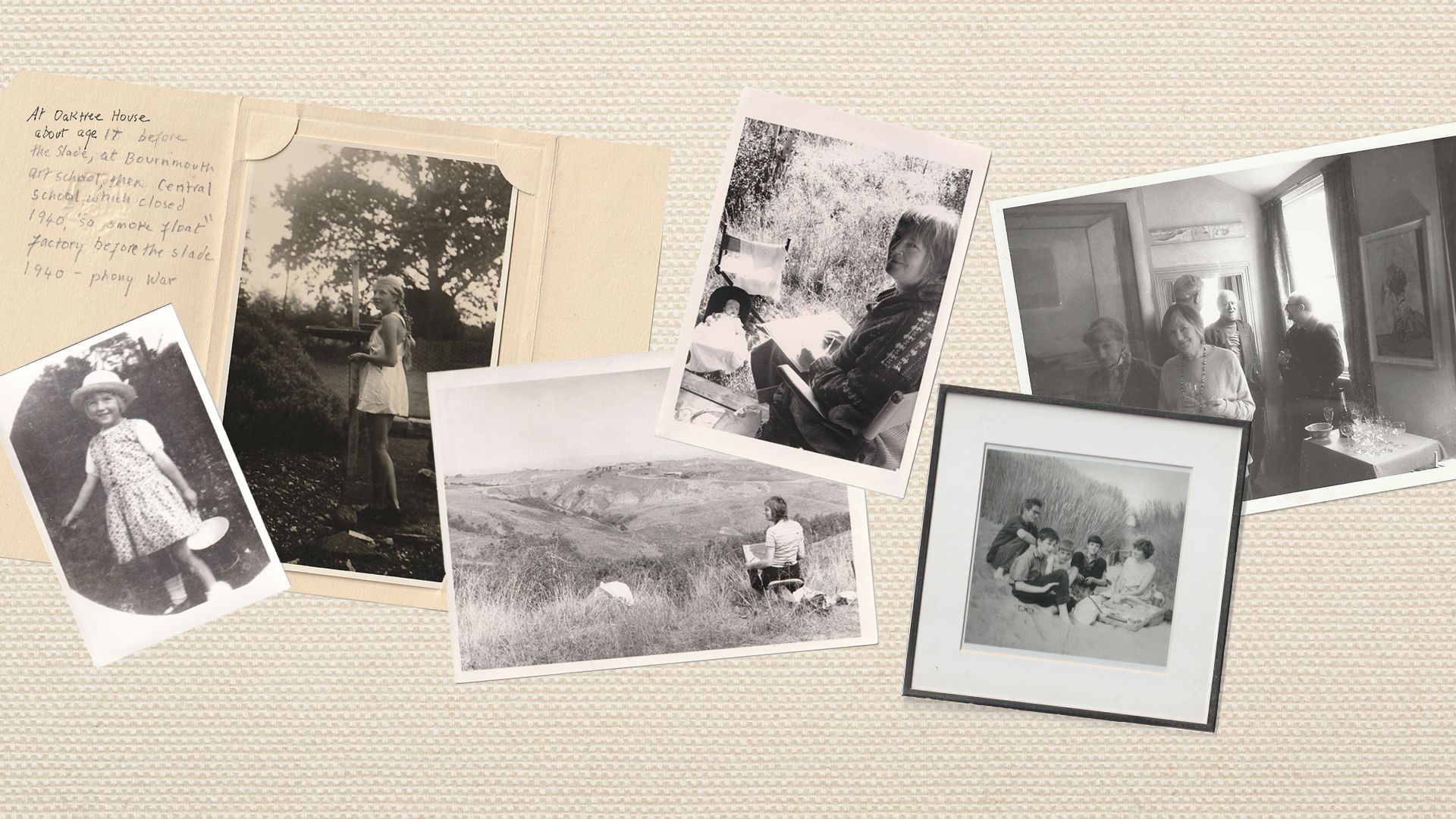
For some time, I lodged above a sweetshop in the St Giles area of Oxford. It was an extraordinary time to be in the city. It felt as if it had been taken over by young people. Walking around, one constantly bumped into friends or met new people on the street and in the many bookshops.
During the war, I became heavily involved in wider community life. I arranged lots of entertainments, bringing art, crafts and music to factory workers and soldiers at the YMCA hostel, as well as restarting neighbourhood choirs and an amateur orchestra to support my ventures.
I was also highly political in those days. I’d previously been on a fascinating trip to the Soviet Union, and in Oxford I was a strong supporter of the Labour Party. I thought it was important for Labour to be part of the war effort and coalition, and to try to rescue the Jews from Hitler.
Portraits of Diana Armfield c.1940-1: Helen Muspratt; Backdrop: Orchid in Full Flower
Portraits of Diana Armfield c.1940-1: Helen Muspratt; Backdrop: Orchid in Full Flower
It was at the Slade that I also met my future husband, Bernard Dunstan. He too went on to become a successful artist. I still remember the moment our eyes met. We students were arranged around a life model, and every time I looked up from my drawing, I saw Bernard. After the class, he asked me to go for coffee and our romance blossomed from there.
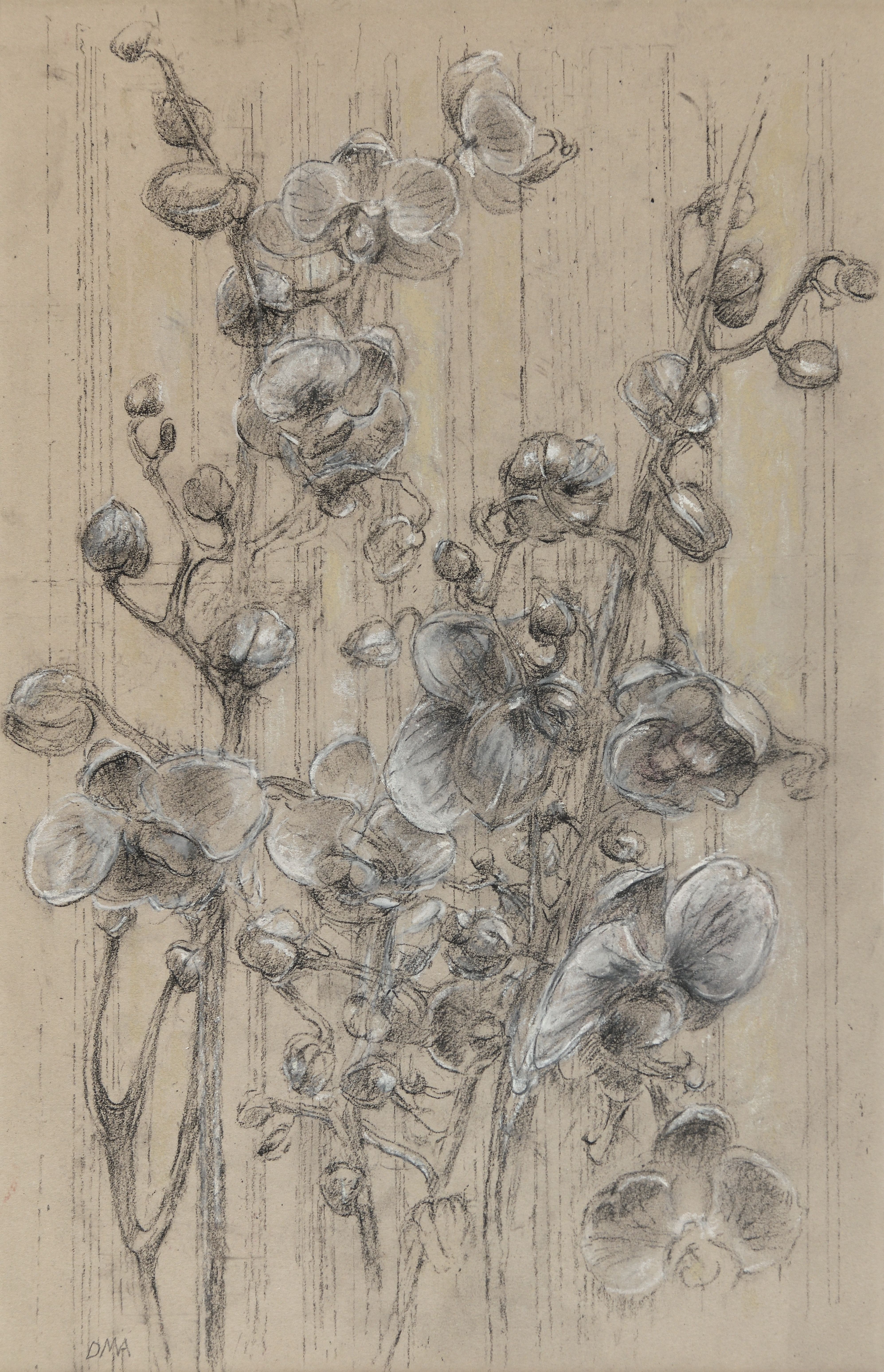
Sprigs of Viburnum
Sprigs of Viburnum
A Profusion of Wild Flowers
A Profusion of Wild Flowers
Nasturtiums with the Last of the Phlox
Nasturtiums with the Last of the Phlox
Summer Flowers in Orvieto Jug
Summer Flowers in Orvieto Jug
Fallen Petals, Llwynhir
Fallen Petals, Llwynhir
Share your story with Generation UCL
This article is based on an interview conducted by Dr Sam Blaxland for Generation UCL, a new research project that will mark UCL’s bicentenary in 2026 by placing students at the centre of our institutional story. The project will create UCL’s first archive of oral-history testimonies from alumni.
If you would like to contribute your own testimony about life at UCL, complete the expression of interest form.
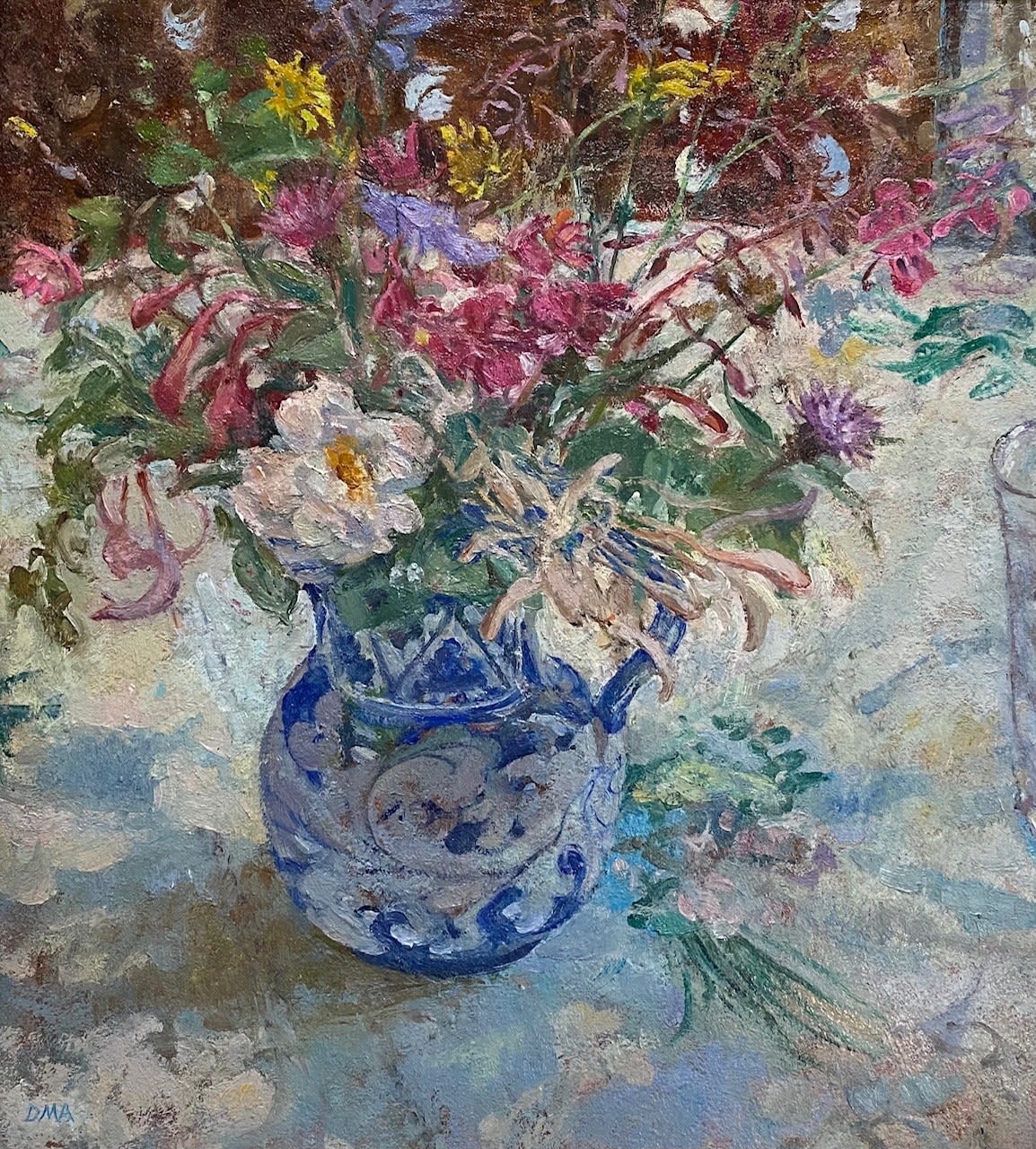

Portico magazine features stories for and from the UCL community. If you have a story to tell or feedback to share, contact advancement@ucl.ac.uk



